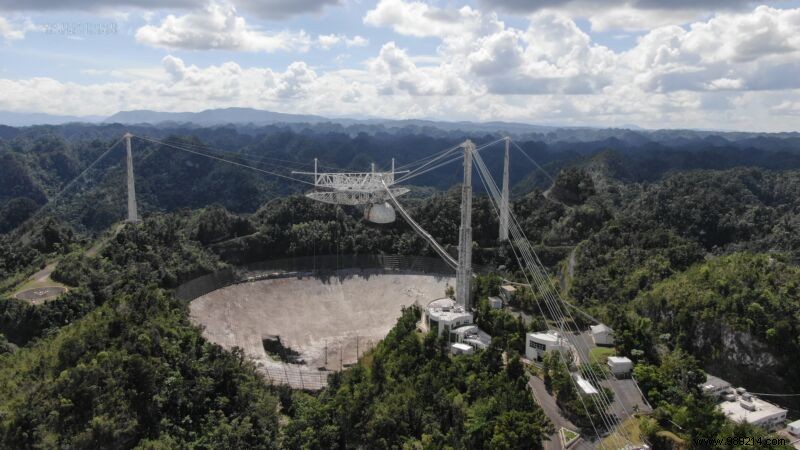An ongoing investigation into the collapse of the legendary Arecibo Observatory in Puerto Rico suggests that a flaw in the establishment of the one of the structure's auxiliary cables may have contributed to its failure.
The science platform of the Arecibo telescope, which weighed 900 tons, was suspended above the vast radio dish by three dozen cables. Last August, one of these cables came out of its socket. Then, before it could be put back in place, a second cable collapsed. From then on, the National Science Foundation (NSF) of the United States, owner of the site, judged that the platform was too unstable to be repaired in complete safety. So she decided to decommission the structure. The telescope finally collapsed on its own on December 1.
Since this incident, teams have been on site to clean up the most dangerous and unusable debris. They must also deconstruct Arecibo's huge reflective antenna, which is said to measure 305 meters in diameter , which takes time. Teams are also evaluating the various parts of this antenna to determine which can be salvaged. Finally, they systematically evaluate the potential historical significance of this debris in order to determine which should be conserved.

Two investigations are simultaneously underway to try to assess the causes of this collapse, at the request of the US Congress. One of these investigations focuses on the twelve auxiliary cables of the structure added in the 1990s , while the suspended dome (which distinguished the appearance of the telescope in the film "Contact" from that seen in the film "GoldenEye") was installed.
The first cable to fail, once connected to one of the three support towers surrounding the antenna, was indeed one of these auxiliary cables.
This preliminary study revealed "the implementation procedure of this cable had "not been done properly ", leading to "advanced degradation of this particular structural element “said observatory director Francisco Cordova. The latter also recalls that the examination is still in progress. Also, these conclusions are not yet definitive.
Furthermore, "there is probably not just one factor, but a host of things that contributed to this particular failure “, continues the director. "In addition to the establishment age, the past few years have been difficult for Puerto Rico." In 2017 Hurricane Maria hit the island and during 2020 it suffered over 10,000 earthquakes “.
The second investigation focuses for the moment on the main cables, which are original (1960s). It was indeed one of these main cables that broke in November (the second to drop). The full results of this study should be known by the end of February.